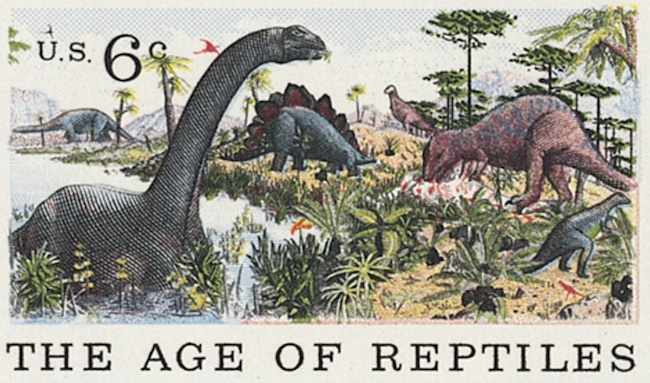| Dinosaurs Articles |
| Triassic Period |
| Jurassic Period |
| Cretaceous Period |
| Extinction |
| Morrison Formation |
| Bone Wars |
| Dinosaurs Profiles |
| Tyrannosaurus Rex |
| Brontosaurus |
| Diplodocus |
| Archaeopteryx |
| Triceratops |
| Stegosaurus |
| Allosaurus |
| Velociraptor |
Jurassic Period |
||||||
The Jurassic Period, spanning from approximately 201 to 145 million years ago, is a chapter in Earth's history that witnessed the emergence of iconic dinosaurs, flourishing plant life, and significant geological transformations. Named after the Jura Mountains in Europe, this geologic era has left an indelible mark on the fossil record, captivating scientists and enthusiasts alike with its diverse ecosystems and the rise of magnificent creatures. Geological ContextThe Jurassic Period is the middle segment of the Mesozoic Era, often referred to as the "Age of Dinosaurs." It followed the Triassic Period and preceded the Cretaceous Period. Geologically, the Jurassic was characterized by the breakup of the supercontinent Pangaea, leading to the formation of smaller landmasses and the opening of the Atlantic Ocean. Iconic DinosaursThe Jurassic landscapes were dominated by a rich array of dinosaurs that have become household names. Massive sauropods like Brachiosaurus and Diplodocus roamed the Earth, utilizing their long necks to graze on vegetation. Predatory theropods like Allosaurus and the smaller, agile Velociraptor ruled as fearsome hunters, showcasing the diversity of carnivorous adaptations.
Stegosaurs and PterosaursThe Jurassic also witnessed the prominence of herbivorous dinosaurs like Stegosaurus, known for its distinctive double row of bony plates along its back and formidable tail spikes. Additionally, the skies were populated by Pterosaurs, flying reptiles with wingspans ranging from small to impressive, such as the Pterodactyl.Lush FloraThe flora of the Jurassic was characterized by lush, fern-dominated landscapes. Conifers and cycads were prevalent, contributing to the diverse ecosystems that supported the herbivorous dinosaurs. The evolution of flowering plants was still in its early stages during this period.PaleoenvironmentsThe Jurassic Period featured a variety of environments, including coastal regions, river valleys, and extensive forests. The shifting continental plates led to the formation of shallow seas, providing habitats for marine life and influencing the development of distinct ecosystems.Marine LifeThe seas of the Jurassic were home to a diverse array of marine life, including ichthyosaurs, marine crocodiles, and ammonites. Ichthyosaurs, resembling modern dolphins, were highly adapted marine reptiles, while ammonites, spiral-shelled mollusks, were abundant and played a crucial role in marine food webs.Impact on Earth's ClimateThe Jurassic was marked by relatively stable and warm climatic conditions, fostering the proliferation of life. However, the period did experience fluctuations in sea levels and climate, influencing the evolution and distribution of species across the globe.Scientific DiscoveriesScientific exploration and fossil discoveries have been instrumental in shaping our understanding of the Jurassic Period. Fossilized remains found in regions such as the Morrison Formation in North America and the Solnhofen Limestone in Europe have provided invaluable insights into the ancient world. |

